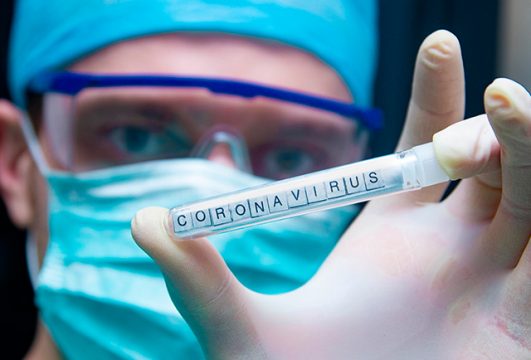This study shows re-sterilization of N95 and KN95 surgical face masks is indeed feasible, though not all techniques will render the same results and not all protection elements will keep filtration capacity.

COVID-19 has produced, among other things, a shortage of healthcare protection gear.
The CDC has suggested reusing face masks to overcome this shortage.
Even though surgical face masks should never replace N95 given its lesser filtration capacity, a randomized study has shown differences in confirmed cases between staff using regular vs. N95 face masks (for influenza)
The CDC has also recommended KN95 masks (the Chinese versión of N95s) be used as an acceptable alternative whenever N95 were not available.
Read also: Convalescent Plasma for Severe Pneumonia from COVID-19.
The aim of this study was to assess filtration efficacy of the different type of face masks after re-sterilization.
It compared filtration efficacy on three types of masks (N95, KN95 and regular surgical face mask) after sterilizing with plasma vapor hydrogen peroxide (H2O2) and chlorine dioxide (ClO2).
All masks were placed in an incubator at 38° C with 100% relative humidity for 12 hours to simulate their first use.
A scanning mobility particle sizer was used to measure particle number, concentration and size that might get through the protective gear after sterilization.
Read also: Natural History of Asymptomatic COVID-19 Infection.
Baseline mean filtration efficiency of untreated masks was 97.3% (0.4%) for N95s, 96.7% (1.0%) for KN95s, and 95.1% (1.6%) for surgical face masks. After H2O2 sterilization, filtration efficiency was 96.6% , 97.1% , and 91.6% , respectively.
N95 and KN95 masks were able to keep at least 95% filtration efficacy, but regular surgical mask efficacy saw a reduction.
After H2O2 sterilization, filtration efficacy was 95.1% for N95, 76.2% for KN95 and 77.9% for surgical face masks.
H2O2 sterilization produced a non-significant reduction on filtration efficacy as opposed to CIO2.
Read also: Efficacy of Remdesivir against COVID-19.
N95s kept 95% filtration efficacy of overall particles after sterilization, but when considering 300 nanometer particles, this capacity dropped to 86.2%.
The other two models saw a much worse efficacy against 300 nanometer particles: 40.8% for the KN95 and 47.1% for the surgical masks.
This study shows re-sterilization of the different types of masks is feasible, though we recommend a closer look to filtration capacity of spays, not just global filtration capacity.
Among the limitations of this study, we can enumerate only 2 sterilization methods were looked into, and that there is a big number of masks with the same filtration capacity that might behave differently after re-sterilization.
Original title: Effects of Sterilization With Hydrogen Peroxide and Chlorine Dioxide Solution on the Filtration Efficiency of N95, KN95, and Surgical Face Masks.
Reference: Changjie Cai et al. JAMA Network Open. 2020;3(6):e2012099. doi:10.1001/jamanetworkopen.2020.12099.
Subscribe to our weekly newsletter
Get the latest scientific articles on interventional cardiology




